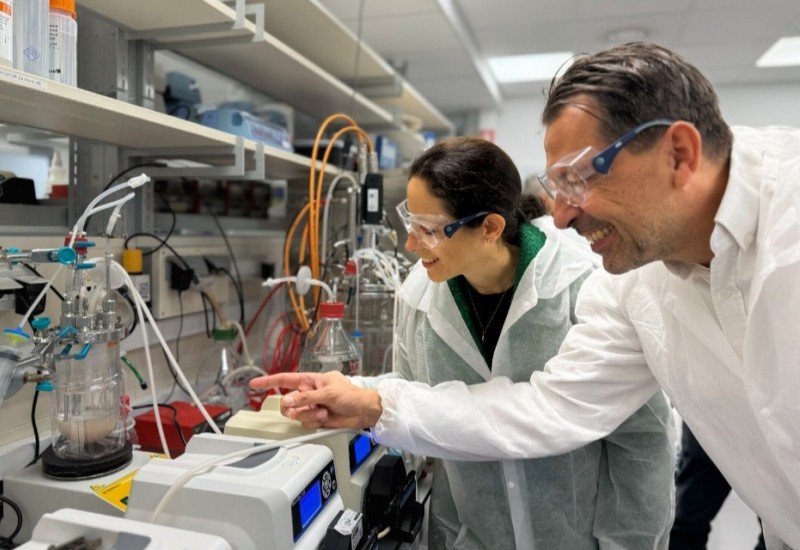FEATURE ARTICLE - Why speciality chemical producers must ride the digital wave
Paige Marie Morse, industry director at AspenTech, looks at the specific digital challenges facing speciality chemicals companies
Speciality chemicals producers are under intense pressure. They need to be more innovative in product development. They need to manage operational complexity while delivering the variety and volume of products customers demand. And they need to maintain their assets more efficiently.
Digitalisation increasingly offers a way forward for speciality chemicals operators seeking to address these challenges. The opportunities are immense, from the ability to drive up productivity and profit to enhanced throughput and yield, to the ability to achieve predictive maintenance to help ensure continuous operations and enhanced safety.
Given these potential benefits, why are more chemical operators not taking advantage of digitalisation? Complexity is the most common refrain. Many struggle to decide where to begin. Many operations, particularly in specialities, have become increasingly complex as customers demand higher levels of performance and quality and a greater range of options from producers and operators realise the need to diversify product lines to meet these increasingly sophisticated needs.
Putting a plan in place
Chemical production involves thousands of different processes that are used to make tens of thousands of products on a wide variety of asset types, often across several geographic regions. Quick and simple solutions are not readily available in this environment. Digitalisation projects take time.
However, the experiences reported by AspenTech customers overwhelmingly prove the value of the effort. Increasingly, digitalisation is not just an option but a strategic necessity. In the speciality chemicals arena we see a wide range of drivers - from better alignment with customers to accelerating product innovation to optimising across the value chain - that digital technologies can help organisations to address.
Aligning with customer demands is especially crucial. Models of manufacturing assets can be used to automate identification and evaluation of production scenarios across a variety of timeframes. These models represent the full complexity and options possible, including production rates, constraints, set-up times, sequencing and site logistics.
Speciality chemical companies cite an 8-12% increase in on-time order fulfilment when these tools are applied. Meeting customer needs includes ensuring that assets operate well and produce the targeted products. Leading companies use multivariate tools to analyse interrelated operational data to identify and eliminate sources of process variability.
Businesses apply this analysis to batch and continuous processes to make sure that more production meets specification. Innovation can enable businesses to meet customer demands while driving competitive position. Digital technologies can boost productivity and reduce errors by easing the transition from laboratory to plant production processes.
Manual procedures, hand-written reports and paper-based systems are still common for critical activities like recipe execution and raw material management. These isolated tools limit visibility into data and frequently delay responses to potential quality issues and regulatory requirements. Through digitalisation, organisations can achieve visibility that, in turn, allows them to gain the necessary insight to deliver improvements in consistency and quality.
When assessing the value chain, technology solutions facilitate the monitoring, execution and control of the manufacturing process. In addition, planning and scheduling tools help to boost responsiveness and related profitability.
Rapidly changing market and customer demands force frequent changes in production schedules. Adjustments as high as 25-45% each month are not uncommon. Improved scheduling tools add value to business decision-making as variations occur, by incorporating constraints, like storage limitations and variable lead times, while minimising excess inventory and off-spec production.
Better scheduling capability can also boost asset utilisation. At the same time, schedulers can see the impact of their decisions and make adjustments to avoid problems along the supply chain before they happen. With targeted plant scheduling tools, the scheduler can rely on the model to inform decisions like batch size determination, resource selection and batch sequencing. The technology helps to achieve better asset utilisation and improved customer service by clarifying profit opportunities and extra costs in less than optimal operations.
The next step is production optimisation, which links manufacturing systems to scheduling. These systems can give visibility to storage tank levels, for example, so scheduling tools can decide when raw materials should be put in tanks and when they should be emptied. This link can also alert the scheduler if processes are taking longer than expected, allowing for adjustments to be made across the production plan.
The latest solutions for scheduling challenges now include expanded collaboration capabilities enabled by linking supply chain and manufacturing execution systems. Hexion supply chain leader George Baartmans says: “We now have an environment that encourages us to collaborate and communicate ahead of time so that we can get ahead of things and reoptimise for any conditions that might be happening.” Checks against master data help to build the ‘self-healing supply chain’ that delivers a more sustainable plant and supply chain performance.
Benefitting from digital acceleration
For four decades, the process industries focused on improving operational performance through digitalisation. Digital technologies allow speciality chemical producers to take this beyond operations and expand to address key market drivers like accelerating innovation, optimising the value chain and aligning with customer demands, effectively giving them a route map to future success.
The tools, services and solutions speciality chemicals producers need to manage their complex operations and achieve new levels of reliability and profitability are accessible to companies now. To take advantage of the opportunity, producers must first consider their primary business challenge and identify the relevant digital solution to adopt. That will set them on a path toward a more holistic approach to achieving optimum return over the asset lifecycle.
CONTACT
Kate Jones S
enior Marketing Communications Manager
AspenTech
+44 118 9226510
https://www.aspentech.com/















